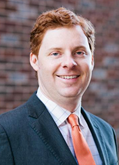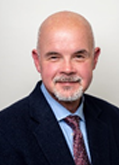History of the Leadership Development and Advisory Council (LDAC)
In 1969, the Society of Real Estate Appraisers founded a program known as the Young Men’s Council. Initially its composition was men only and included PhD’s as well as real estate appraisers. In the early to mid-1970’s the group was renamed Young Advisory Council (“YAC”). As part of the name change, registration was opened to both men and women with an age restriction of 35 and under. Meeting at various venues around the country once a year, YAC was a think tank for the young real estate professional discussing the appraisal industry and its future. The name YAC remained until around 1999/2000 when the group was renamed Leadership Development and Advisory Council (“LDAC”). Prior to 1993 the group met at various venues around the country. Since 1993 the group has met in Washington, DC with a focus including the think tank discussion sessions and lobbying on Capitol Hill for various issues of concern to our profession. Since 2008 a focused effort has been made to provide additional leadership training to the LDAC participants.
Appraisal Institute (“AI”) leadership consistently advises those wishing to be involved in leadership roles with their local chapters and on a National level to attend and use LDAC as a training ground. In 1996 the AI Finance Committee considered eliminating YAC due to costs. Spence Powell, MAI (a long-term supporter of YAC and 1996 AI President) contacted Ted Anglyn, MAI (1997 YAC Chair) and requested he come to Chicago in an attempt to convince the Executive Committee and the Finance Committee otherwise. Ted made a case for saving the group. Ted’s primary argument to the Executive and Finance Committees was “if you do not invest in your future, you will not have one”. Ted considered YAC/LDAC the future, as it represented the only national meeting platform for young appraisers to meet without specific designation status and not bound by outside agendas. Spence said that abolishing YAC would be like “eating your young”. Spence then arranged for his Executive Committee made up of Ken Nicholson, SRA (1997 AI President), Joe Stanfield, MAI, SRA (1998 AI President), and Bert Thornton, MAI (1999 AI President) to attend YAC in 1996. After their attendance they became strong supporters of this program. Mr. Stanfield recently said that he “believes anyone wishing to fill a leadership role on a chapter or National level should pass through LDAC to have their ticket punched”.
Ted then went on to provide a plan of action to save this group that included rewriting the LDAC bylaws. In the rewriting of the LDAC bylaws the age restriction was eliminated. Attendance from two out of three years was replaced with three out of five years. This increased the continuity and experience level which in turn has enhanced the program. In 2009 the LDAC was made part of the AI Governance Structure, with the LDAC’s recommendations being made to the AI’s Strategic Planning Committee for consideration in the future path of the AI.
LDAC continues to thrive by motivating the young and young at heart to participate in the appraisal profession and the AI. Participants come to Washington, DC participating in the discussion groups, lobbying on Capitol Hill, and networking with colleagues from all over the US and internationally. The participants also have the unprecedented opportunity to get to know the Executive Committee and staff during this conference. These participants leave Washington, DC with buy-in to the AI as a national and international organization returning to their local AI chapters as foot soldiers for the AI.
In 2011 the LDAC hosted its largest number of participants in its history numbering 109 participants, representing 34 states, the District of Columbia, Puerto Rico, and Mexico. The maximum number of participants (100) for 2012 was reached faster than at any time on record. This is a direct reflection of the positive word of mouth referrals that come to AI members from current and past LDAC participants. The AI continues to make a huge investment in its future by providing a venue of open discussion and independence in LDAC that cannot be replicated within our organization.
Written by, Joseph (Joe) B. Woods, SRA

































